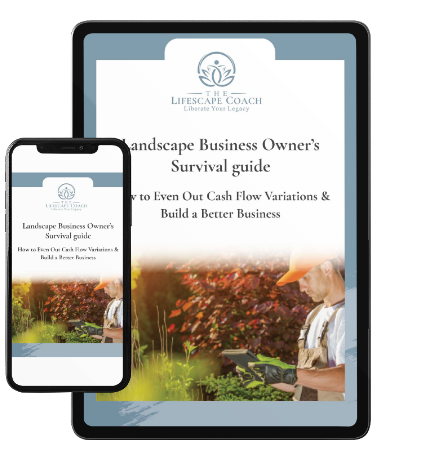7 Ways to Instantly Improve Your Landscape Sales Timeline
The landscape industry is seasonal, so no matter where you live in the world, there are peak seasons and off seasons. If you’re like most landscape designers and contractors, the all-at-once influx of new business in your peak season can be tough to handle. Wouldn’t it be nice if you could spread some of that new work out and be better prepared to handle it when the rush rolls around? Well, there is a way.
It starts by knowing what your peak season looks like as early as possible. For me, that means locking in business the previous fall with existing clients, and planning my next season’s work before the snow flies. Do you know what your peak season looks like, say three months in advance?
Here are seven tips to help you manage new and existing business for your next peak season:
- Start off by making a list of all your current clients and rate them as “best”, “mediocre”, and “worst.” Do this as early as possible as your season is winding down. For me, that means getting to work in the late summer to early fall – normally the end of September. This process forces you to evaluate each and every client to better understand how they affect your business. For those clients you ranked as “mediocre”, figure out how to make those working experiences better and do whatever work you need to turn them into “best” clients.
- Identify the clients you really want to work for next year. You know who they are – the ones who pay on time, are a joy to work with, and require additional services above and beyond the basics.
- If necessary, encourage existing clients to sign on for the next season by offering them highly attractive renewal rates that rewards their early commitment. Whatever you do, make sure it’s profitable – don’t give away a dollar to make fifty cents!
- Always sign on favorite clients first and make a point to talk to them in the low season about projects they may otherwise wait until peak season to ask you about. Design, budget and plant their projects in advance and lock them in with deposits and dates. This will help you plan your income and expenses better too.
- Once you’ve signed up the best, figured out how to turn the mediocre into the best and sign them up as well, being sure to discuss upgrades and garden edits. Often times the difference between mediocre and best is just a small adjustment in communication style, billing practice or even something as simple as wanting some face time with you once a year.
 For the clients who are truly marginal and potential drags on your business, consider having a heart-to-heart talk with them to determine any underlying issues that might be causing current problems or might become future ones. Consider dropping the bottom 10 percent of your client list – the ones that are not profitable and a drain on your business and resources. After carefully evaluating and adjusting your client list, chances are good you’ve created a gap between the business you had the previous season and what’s left for the next peak season. You then have a choice to fill that gap by pre-selling to new prospects before your next peak season ramp up.
For the clients who are truly marginal and potential drags on your business, consider having a heart-to-heart talk with them to determine any underlying issues that might be causing current problems or might become future ones. Consider dropping the bottom 10 percent of your client list – the ones that are not profitable and a drain on your business and resources. After carefully evaluating and adjusting your client list, chances are good you’ve created a gap between the business you had the previous season and what’s left for the next peak season. You then have a choice to fill that gap by pre-selling to new prospects before your next peak season ramp up.- Cultivate prospects and turn them into new clients with aggressive pre-sale incentives. Tailor this offer carefully so that it doesn’t appear to be a better deal than what you’re offering existing clients. The last thing you want to do is alienate – or worse, lose – existing business! The point is so bring new clients on in an easy, low-risk way for them. Then use this IN to show them how great your services are for their landscape. They will appreciate the easy in road to working with you and then hopefully never want to let you go!
Actively managing your client list and dealing with issues in the your “down-time” takes some effort. But by carefully pruning the deadwood from your list and nurturing the profitable remainder as soon as possible, you’re poised for a strong start right out of the gate as your next peak season comes rolling in. Because you’ve done all this pre-season work, your pre-sale tasks are a fraction of what they would be if you had simply done nothing. That means you can focus next year on making more money working with a satisfying list of clients rather than scrambling for more work.
Landscape Business Owners Survival Guide



